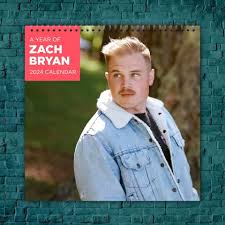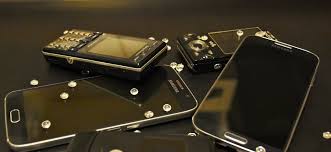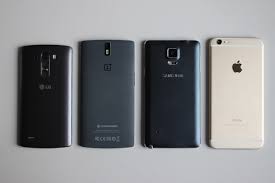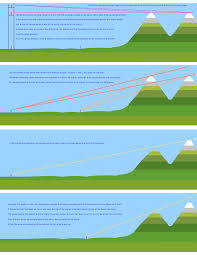Living off the grid offers a sense of independence and sustainability, but it also presents unique challenges, particularly when it comes to powering essential appliances and devices. While traditional generators have long been a staple for off-grid living, advancements in solar-powered generator technology have made them an increasingly popular choice among eco-conscious individuals and remote dwellers. In this guide, we’ll explore the essentials of solar-powered generators for off-grid living, including their benefits, components, and considerations for choosing the right system for your needs.
Understanding Solar-Powered Generators for Off-Grid Living
Table of Contents
Solar-powered generators harness the sun’s energy to produce electricity, providing a clean, renewable, and sustainable power source for off-grid living. These systems typically consist of solar panels, a charge controller, a battery bank, and an inverter. Here’s a breakdown of each component:
Solar Panels
Solar panels are the heart of any solar-powered generator system. They consist of photovoltaic cells that convert sunlight into electricity. The number and size of solar panels you’ll need depend on factors such as your energy requirements, available sunlight, and geographic location.
Charge Controller
The charge controller regulates the flow of electricity from the solar panels to the battery bank, preventing overcharging and extending the lifespan of the batteries. It also ensures that the batteries receive the optimal charging voltage and current.
Battery Bank
The battery bank stores the electricity generated by the solar panels for use when the sun isn’t shining. Deep cycle batteries, such as lead-acid or lithium-ion batteries, are commonly used in off-grid solar systems due to their ability to withstand frequent charging and discharging cycles.
Inverter
The inverter converts the direct current (DC) electricity stored in the battery bank into alternating current (AC) electricity, which is compatible with most household appliances and devices. Some solar-powered generators also include built-in inverters with multiple AC outlets for convenient power distribution.
Benefits of Solar-Powered Generators for Off-Grid Living

Solar-powered generators offer several advantages for off-grid living, making them an attractive alternative to traditional fossil fuel-powered generators:
Renewable Energy Source
Solar power is a renewable energy source that is abundant, clean, and sustainable. By harnessing the sun’s energy, solar-powered generators reduce reliance on finite fossil fuels and help mitigate the environmental impacts of traditional energy generation.
Quiet Operation
Unlike traditional generators, which can be noisy and disruptive, solar-powered generators operate silently, making them ideal for off-grid living in quiet, remote locations. This quiet operation ensures a peaceful and harmonious living environment without the constant hum of a generator.
Low Maintenance
Solar-powered generators require minimal maintenance compared to traditional generators. Once installed, solar panels and batteries typically require little more than occasional cleaning and inspection to ensure optimal performance.
Energy Independence
By generating your electricity from the sun, solar-powered generators offer greater energy independence and resilience, especially in areas with unreliable or nonexistent grid access. This independence allows off-grid residents to power their homes and devices without relying on external power sources.
Choosing the Right Solar-Powered Generator for Off-Grid Living
When selecting a solar-powered generator for off-grid living, there are several factors to consider to ensure you choose the right system for your needs:
Power Requirements
Calculate your energy requirements based on the appliances and devices you plan to power. Consider both the continuous power (watts) and peak power (surge watts) ratings of your devices to size your solar-powered generator appropriately.
Sunlight Availability
Assess the amount of sunlight available at your location throughout the year. Factors such as geographic location, shading, and weather patterns can impact the efficiency and output of your solar panels.
Battery Capacity
Choose a battery bank with sufficient capacity to store excess solar energy for use during periods of low sunlight or high energy demand. Consider the battery’s capacity (measured in amp-hours) and depth of discharge (the percentage of the battery’s capacity that can be used safely).
Inverter Size
Select an inverter with adequate capacity to handle the peak power demands of your appliances and devices. Look for inverters with built-in surge capacity and multiple AC outlets for versatility and convenience.
System Expansion
Plan for future growth and expansion by choosing a solar-powered generator system that can be easily expanded or upgraded as your energy needs evolve. Look for modular systems with scalable components for added flexibility.
Conclusion
Solar-powered generators offer an eco-friendly, sustainable, and reliable power solution for off-grid living. By harnessing the sun’s energy, these systems provide clean and quiet electricity without the reliance on fossil fuels. When choosing a solar-powered generator for off-grid living, consider factors such as power requirements, sunlight availability, battery capacity, inverter size, and system expansion capabilities to ensure you select the right system for your needs. With careful planning and installation, a solar-powered generator can provide years of dependable power for your off-grid lifestyle.
FAQs (Frequently Asked Questions)
- How many solar panels do I need for off-grid living?
- The number of solar panels you’ll need depends on factors such as your energy requirements, available sunlight, and geographic location. A solar installer can help you determine the optimal number and size of panels for your specific needs.
- What maintenance is required for a solar-powered generator?
- Solar-powered generators require minimal maintenance, typically limited to occasional cleaning of the solar panels and inspection of the battery bank. Consult the manufacturer’s guidelines for specific maintenance recommendations.
- Can I use a solar-powered generator in conjunction with a traditional generator?
- Yes, some off-grid residents choose to use a hybrid system that combines both solar power and traditional generator power for added reliability and flexibility. This allows them to leverage the benefits of both systems depending on their energy needs and available resources.
- How long do solar panels last?
- Solar panels are designed to last for 25 years or more, with minimal degradation in performance over time. Most manufacturers offer warranties of 25 years or more on their solar panels, ensuring long-term reliability and peace of mind for off-grid residents.
- Are solar-powered generators suitable for all climates?
- Solar-powered generators can be used in a wide range of climates, but their effectiveness may vary depending on factors such as sunlight availability, temperature extremes, and weather patterns. Proper system design and installation can help maximize performance and efficiency in any climate.







